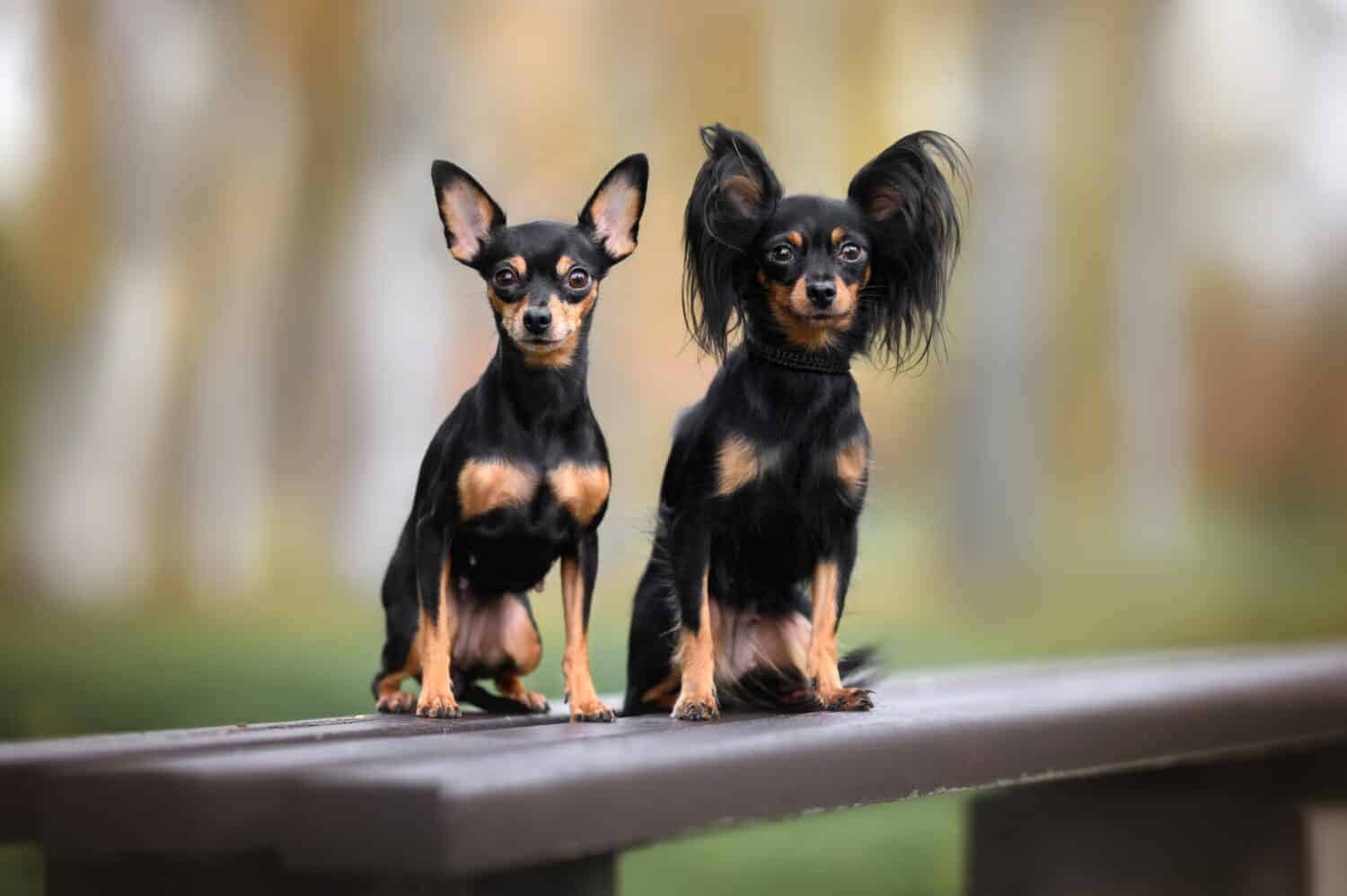The AKC recognizes 201 dog breeds as of March 2024. It’s a far cry from the 350 dog breeds recognized worldwide by dog club organizations, but it’s not easy for a breed to become an AKC-recognized one. First, to be recognized by the AKC, a breed must have a presence in America. This presence usually comes as a parent organization that sets, maintains and assesses pedigrees for the breed.
However, if many people import dogs or an individual dog breeder becomes very successful in the U.S. an individual or group that isn’t a club can apply to the AKC. At that point, the breed enters the Foundation Stock Service (FSS). The FSS tracks the litters and provides the official documentation necessary to become an officially recognized breed.
To be entered into the FSS, the breed must not be a cross of currently recognized breeds, nor can it be a variation of an existing breed. Once the breed has 150 dogs with recognized third-generation pedigrees and a parent club, it can enter the Miscellaneous class, which currently has 11 breeds. Then, after further testing and competition, the breed will move to a more specific class like herding or sport and it will be recognized by the AKC officially.
This list was relatively easy to populate as the AKC doesn’t recognize many breeds. In 2023, no new breeds were recognized by the AKC. Additionally, the AKC keeps a list of all the breeds they’ve recognized by the year they were recognized. So, it was pretty straightforward to determine which dogs needed to be on the list. We also checked the AKC’s most recent press releases to see if any dog breeds were recognized in 2024 that hadn’t been added to the chronological list yet. (Looking for a dog to share your life with? Be sure to read about the 21 longest-living companion dog breeds.)
Lancashire Heeler (2024)
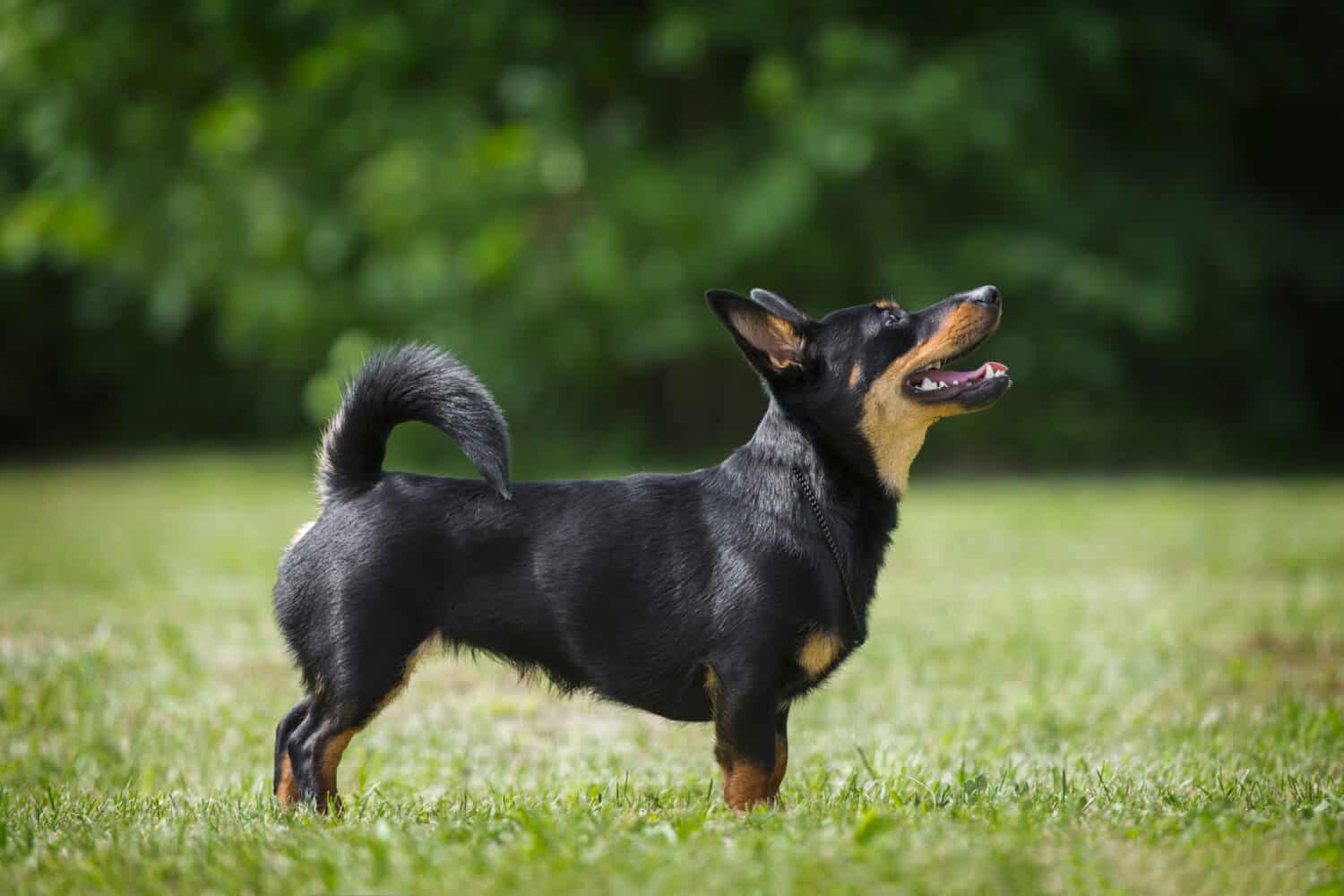
In 2024, the AKC officially recognized the Lancashire Heeler as the 201st dog breed under the AKC. It first joined the Miscellaneous group back in 2017. The breed has since been under scrutiny to ensure the health and safety of the dogs produced for AKC competitions.
As of 2024, the Lancashire Heeler is now part of the Herding Group, which requires an additional 20 litters to be born with third-generation pedigrees. The parent club for the breed, the US Lancashire Heeler Club, estimates that there are 400 Lancashire Heelers nationwide.
This breed is often mistaken for mixed-breed dogs or mini Dobermans. However, it is a distinct breed and it is the only one with the word “Heeler” included in the AKC-recognized name. Thus, the USLHC recommends referring to the breed with the shorthand “Heeler” if necessary.
Lancashire Heeler (2024)
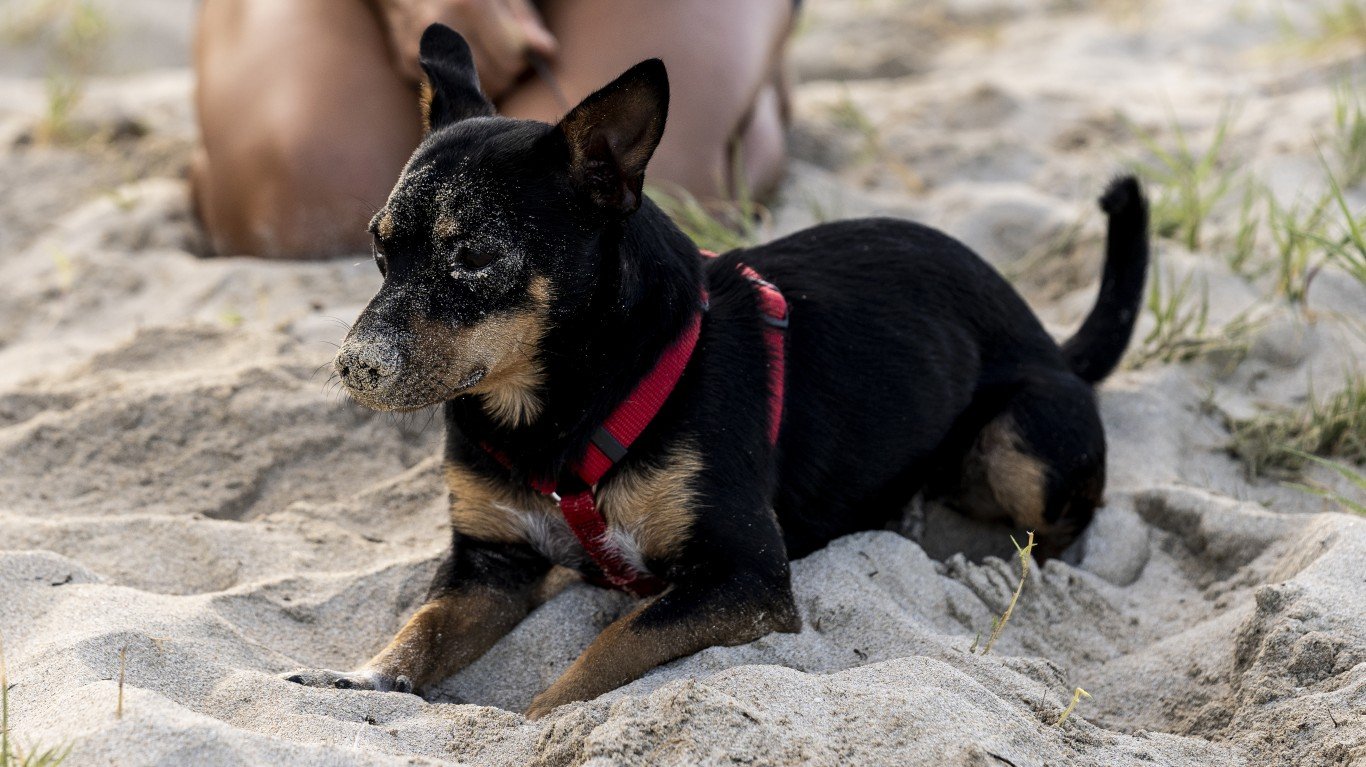
Lancashire heelers typically compete in herding. They can also be found competing at agility, rally, Fast CAT, obedience, barn hunt, dock diving, disc dog and tracking. Some have even competed in the Earth Dog and weight-pull competitions despite their smaller statures.
The breed standard of the Lancashire Heeler indicates that the coat should be black and tan or liver and tan. An adult Heeler should weigh between 9 and 17 pounds and is expected to live between 12 and 15 years. An average Heeler litter should have around five puppies. The AKC recommends that Heelers receive examinations for Primary Lens Luxation, Collie Eye Anomaly and Patellar Luxation to ensure the ongoing health of the dog.
Russian Toy (2022)
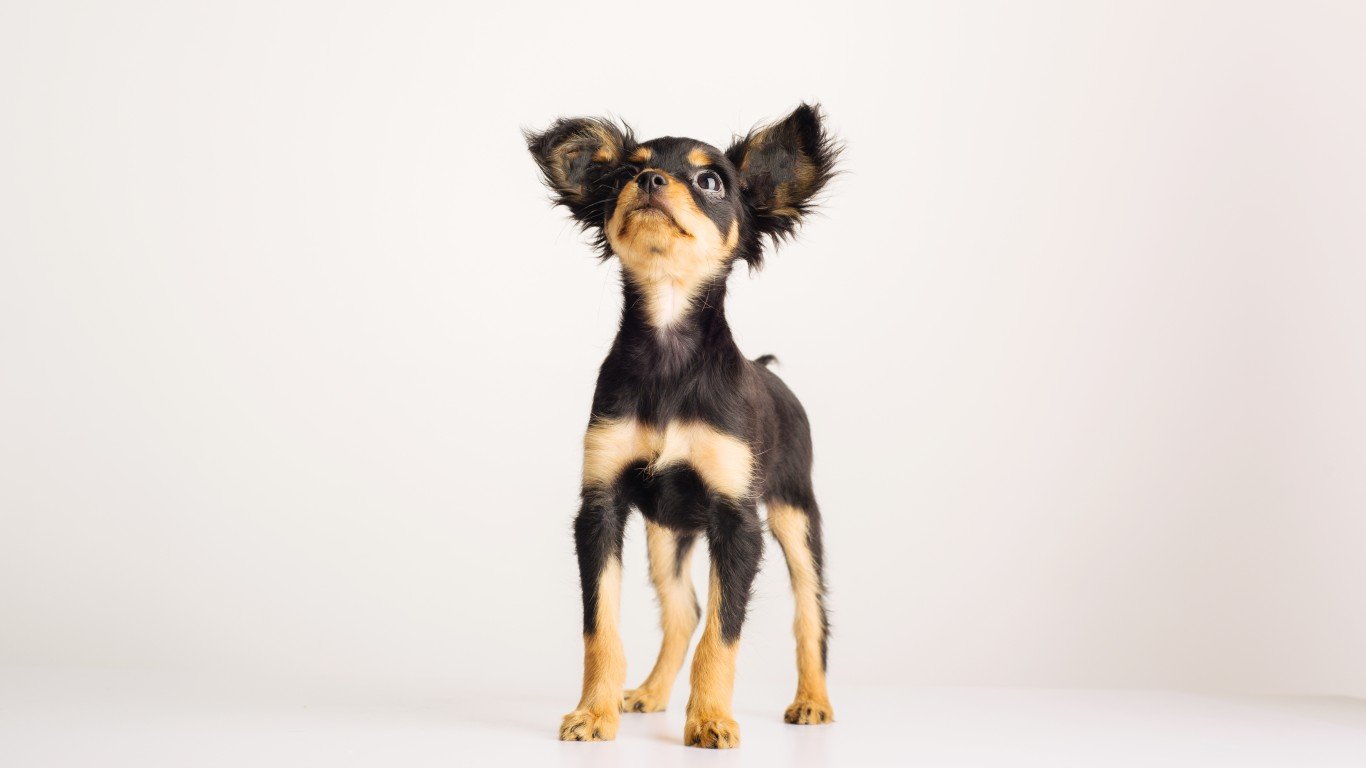
The Russian Toy is a toy group dog with long legs and fine bones, giving it an elegant appearance. Like many toy dogs, the Russian Toy is a lap dog that loves to snuggle up with its favorite people. However, they can be a bit aloof and standoffish with strangers. So, don’t expect your dog to go jumping in your friends’ laps the first time they meet.
Despite being a bit shy with strangers, they are good-natured dogs that prefer to stay active. When they’re done playing they’ll be happy to cuddle up by the fire. However, it’s not uncommon to find a lazy Russian Toy. Not all of them have that go-getter energy. As the name suggests, the dog is of Russian origins and dates back to the Russian aristocracy.
Russian Toy (2022)
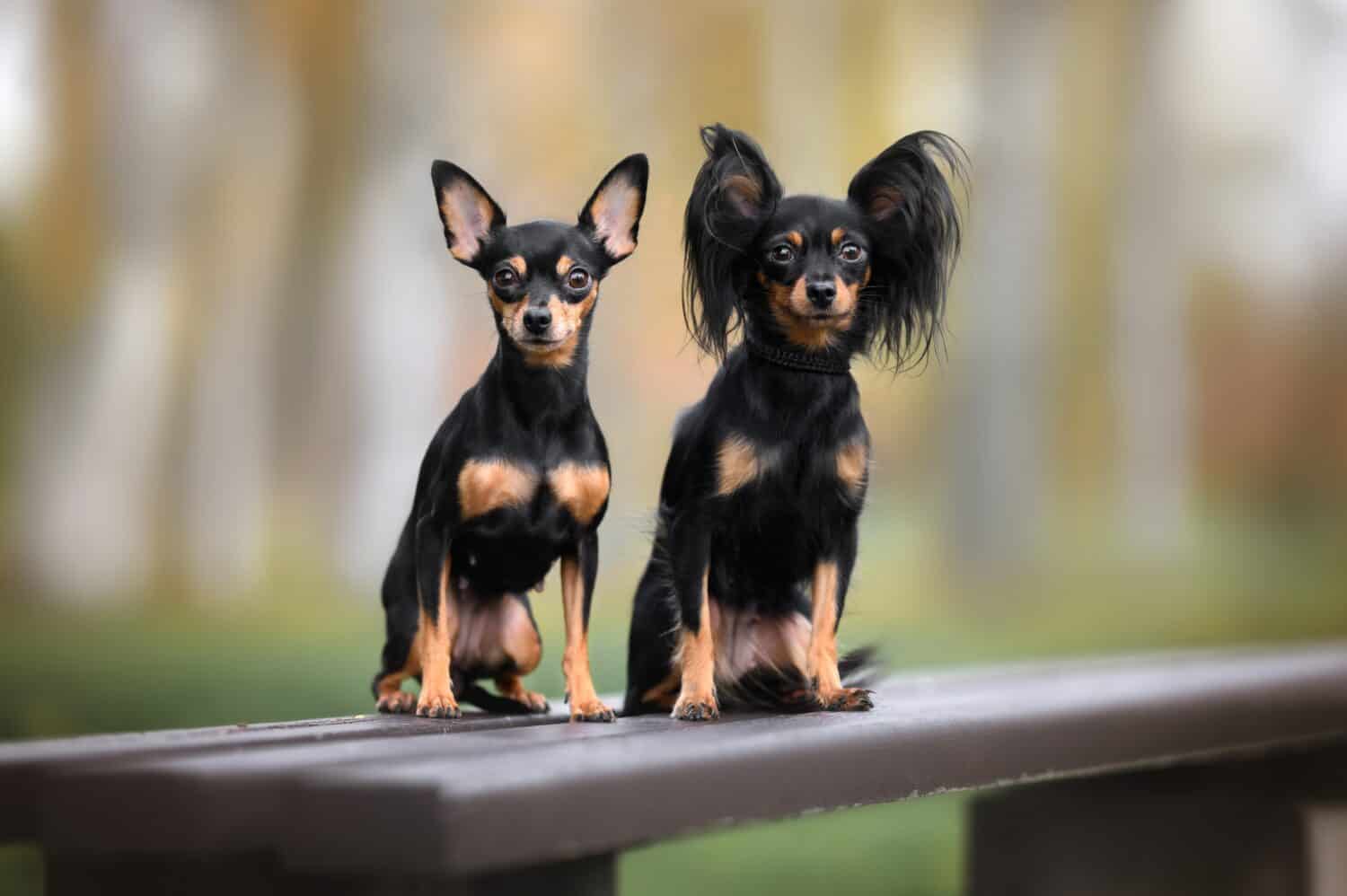
Russian Toy dogs will have semi-long or smooth coats. Dogs with semi-long coats will have chest ruffs with feathering on the extremities, ears and tail, giving them a refined look, like a butterfly. They won’t get their adult coats until they’re over one year old. So, don’t be afraid if your dog doesn’t look quite the same as the pictures.
Additionally, if you have a Russian Toy with semi-long fur, the feathering won’t come in until they’re around three years old. They do have a double coat, even if it’s smooth. So, occasional brushing will be necessary to keep the coat in good condition and prevent the dog from shedding all over the house.
The breed standard indicates that the coat should have one of the following colors or color combinations: red and brown, black and tan, blue and tan, red sable, red, brown and tan, fawn, cream, or lilac. The dogs are small and will weigh up to 6.5 pounds in adulthood. Your dog should live 12-14 years.
Mudi (2022)
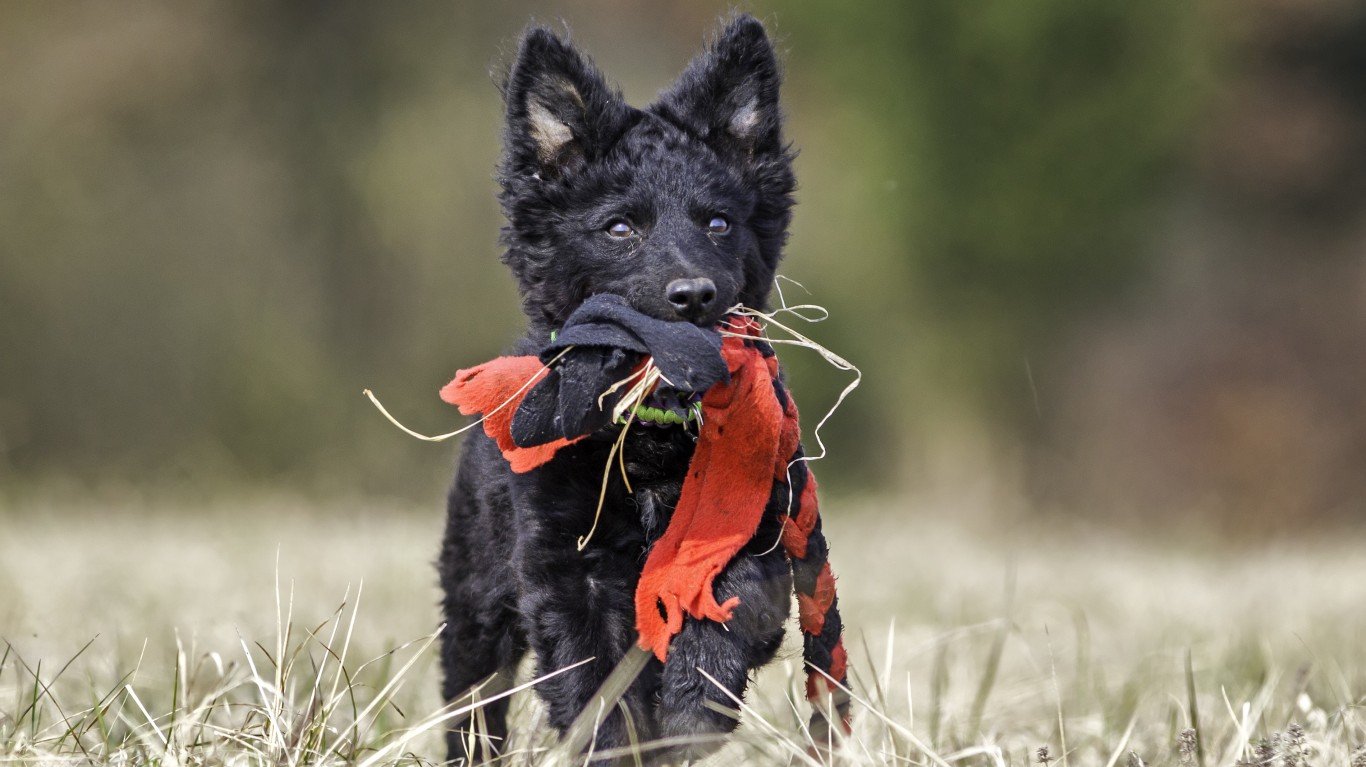
Pronounced “moo-dee”, the Mudi is a Hungarian farm dog that has recently gained popularity and interest in Finland and the USA. The AKC officially recognized the Mudi dog breed in 2022. The original breeders of the Mudi selected dogs for farm work, primarily to work with livestock, including large animals such as cows and sheep.
They are a natural crossbreed of the Puli, Pumi, and German Spitz dog breeds. Despite the recent boom in popularity, they’re still a relatively rare breed with the parent club in Hungary estimating that only a few thousand dogs exist worldwide.
Mudi (2022)
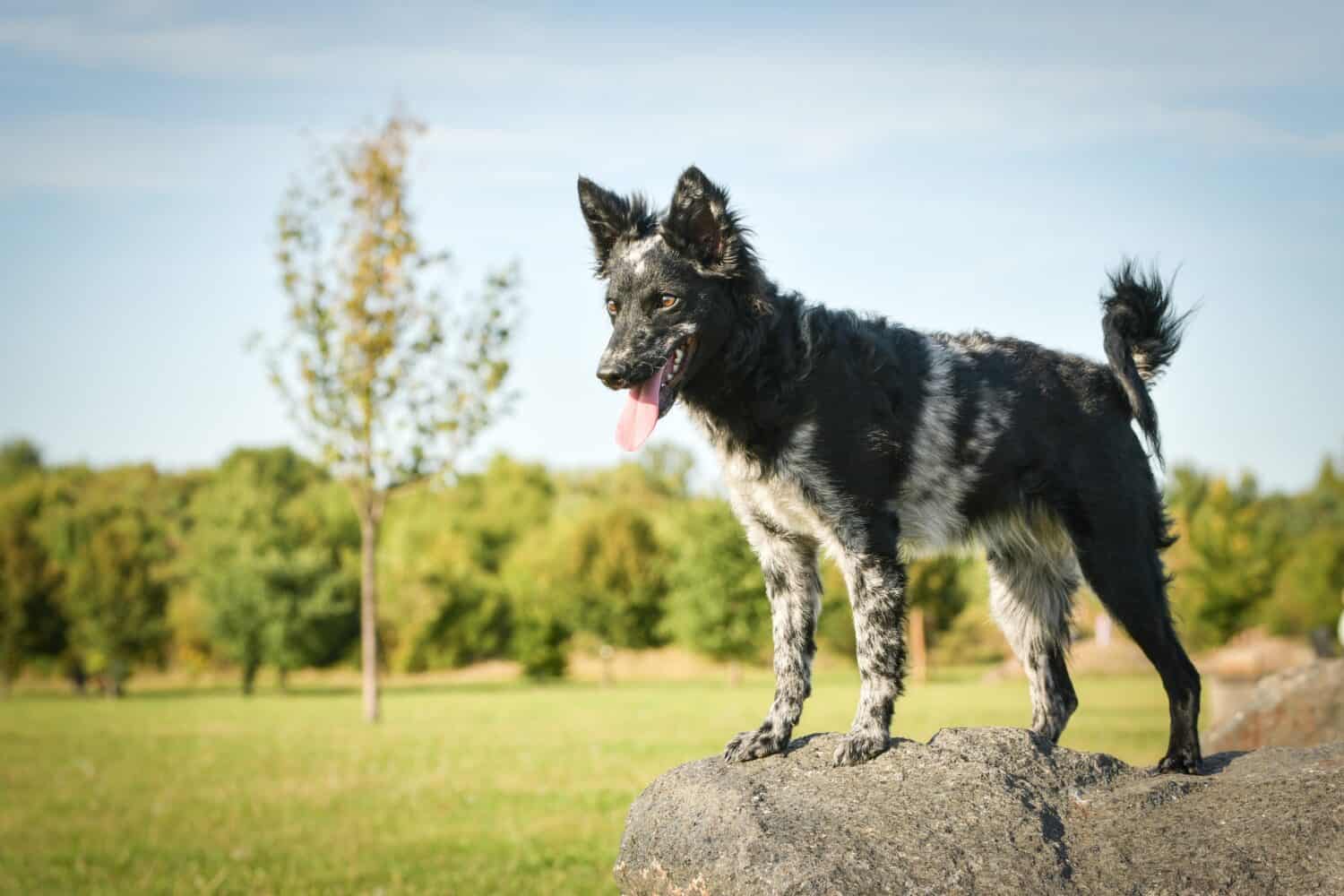
The primary population of Mudis is in their native country of Hungary, with a sizeable population in Finland and growing popularity in the USA. A huge part of their current 15 minutes of fame is due to their proven excellence as search and rescue dogs, leading to widespread breeding in Finland and the USA where they’re being trained for the job.
The breed standard indicates the Mudis should have one of the following coat colors: black, white, yellow, gray, gray-brown, or brown. Any other coat colors would disqualify the dog from competing under the AKC. They should weigh between 18 and 29 pounds in adulthood, and live for 12 to 14 years.
The AKC recommends that people who purchase purebred Mudis get the dogs the following exams: a patella evaluation, hip evaluation, elbow evaluation and eye exam. These tests will ensure that the dog receives optimal care and help improve their overall quality of life by catching any common malformations early.
Bracco Italiano (2022)
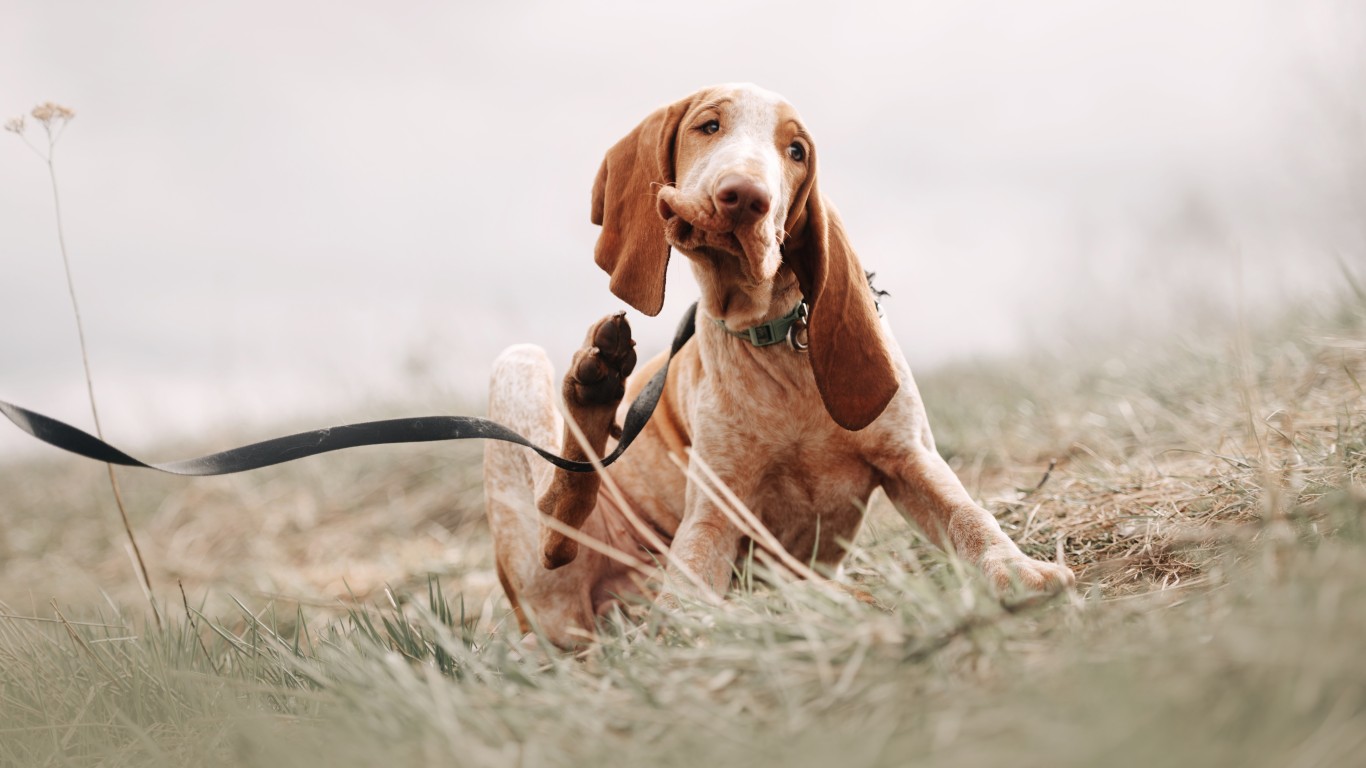
The name “Bracco Italiano” translates to “Italian Hound” and, as the name implies, it’s a pointer of Italian descent. It’s a decorated gun dog that was first introduced into the U.S.A. in the 1990s. The breed received full AKC recognition in 2022.
As gun dogs, these hardy pups are hard to scare if you expose them to typically scary stimuli, like fireworks, young. Like many hunting breeds, they are intelligent and easy to train. However, Bracco Italianos are also pretty docile when they’re not out hunting with their humans.
Once they’ve finished the day’s work, they’re content to curl up and take a big nap with their favorite person, which can be a blessing or a curse since these dogs are pretty big. They’re not the biggest dogs out there—a Saint Bernard will dwarf them. However, they still clock in tall and heavy with long limbs and a sculpted head.
Bracco Italiano (2022)
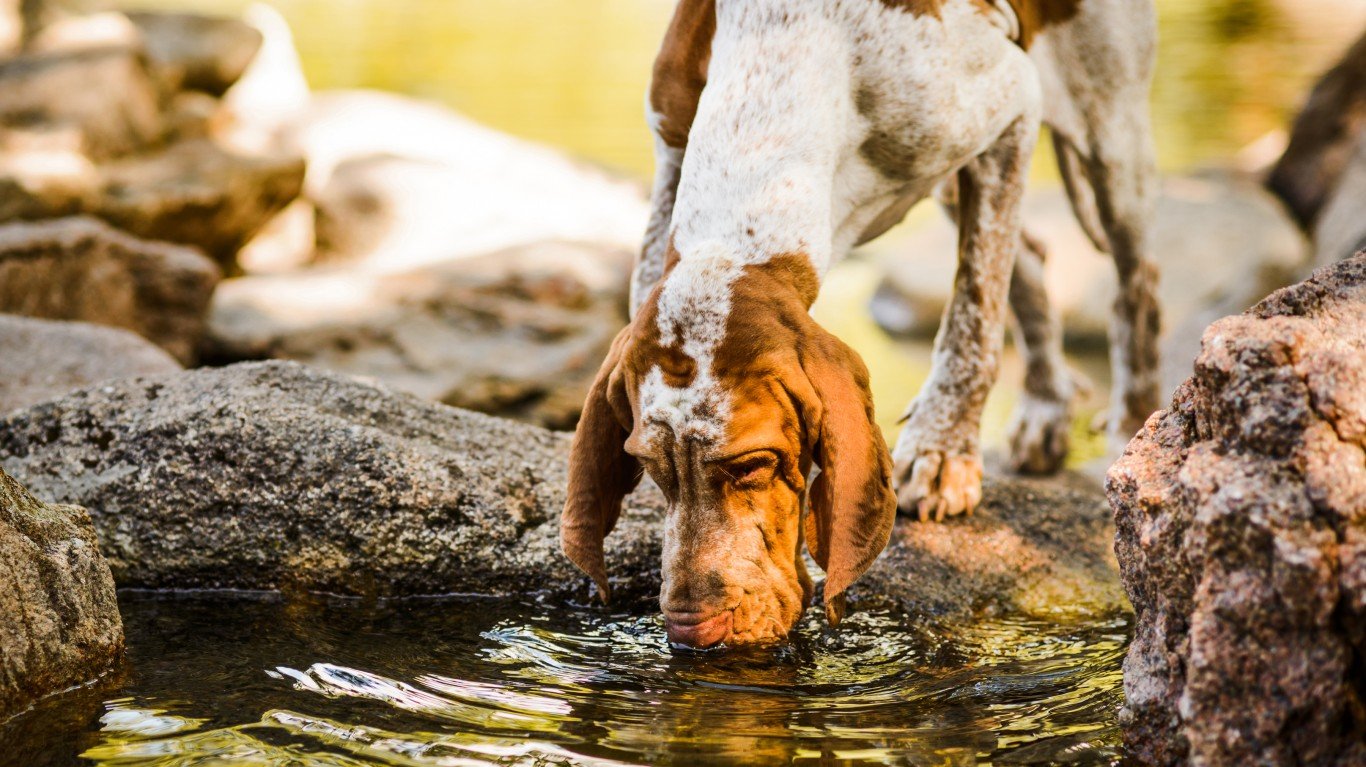
The breed standard for the Bracco Italiano says that your dog’s coat should be white, white and orange, or white and chestnut if you intend to compete in dog shows. An adult dog of this breed should weigh between 55 and 90 pounds and you should expect your dog to live between 10 and 14 years with no serious complications, which is about average for a dog of this size.
They are a healthy breed and the AKC doesn’t have any recommended tests that are necessary to improve this breed’s quality of life and lifespan. However, regular vet visits and wellness checks are still necessary to catch any natural complications of aging.
Biewer Terrier (2021)
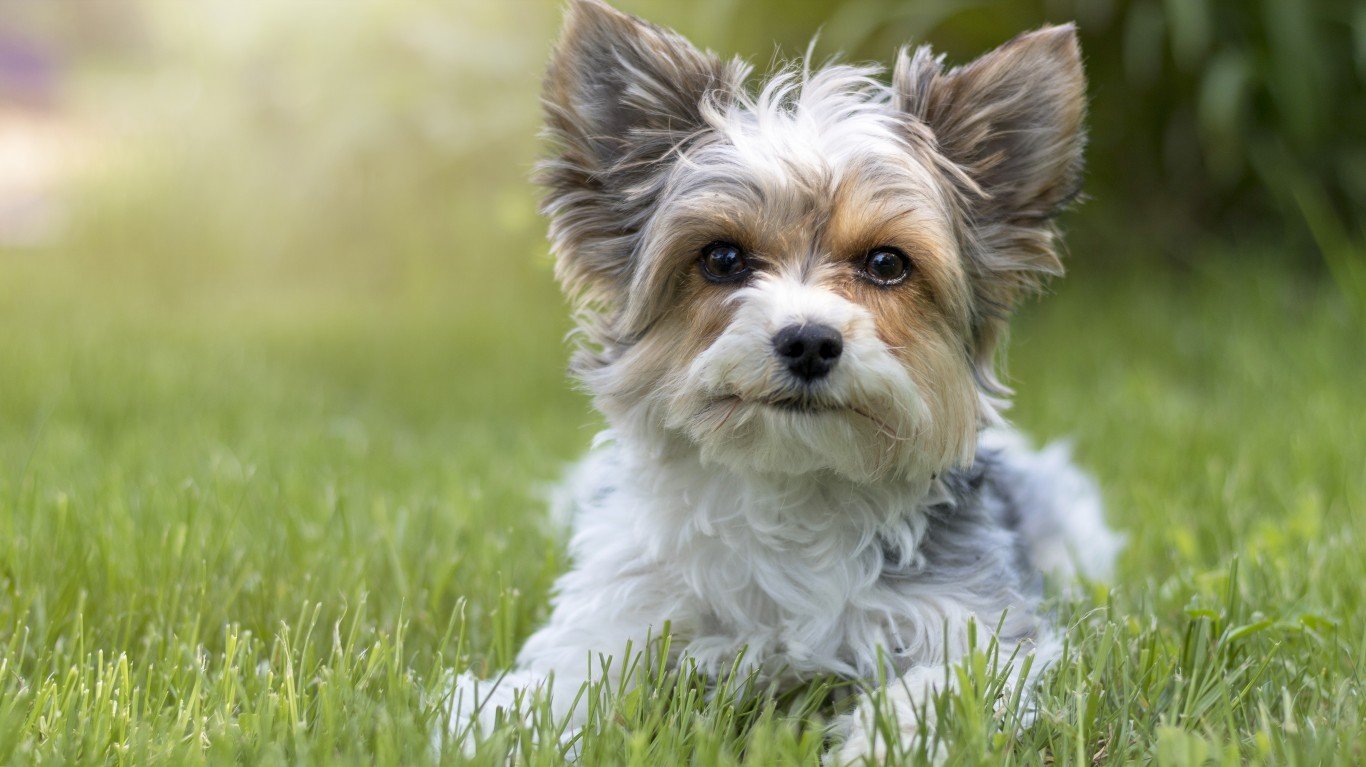
Pronounced like the word “beaver”, the Biewer Terrier is a sweet and loving dog with a happy-go-lucky personality that makes it easy to get along with and love. Like most terriers, it’s a small-statured dog, but that doesn’t mean it doesn’t have a big personality.
Despite being a tiny little guy, these dogs are excellent vermin hunters. Additionally, they’re brave enough to square up with dogs two or three times their size if another dog disrespects them. The Biewer Terrier has a delightful appearance that matches its whimsical nature. With long, tricolored hair, this toy breed has an elegant look that makes it stand out in a crowd.
Biewer Terrier (2021)
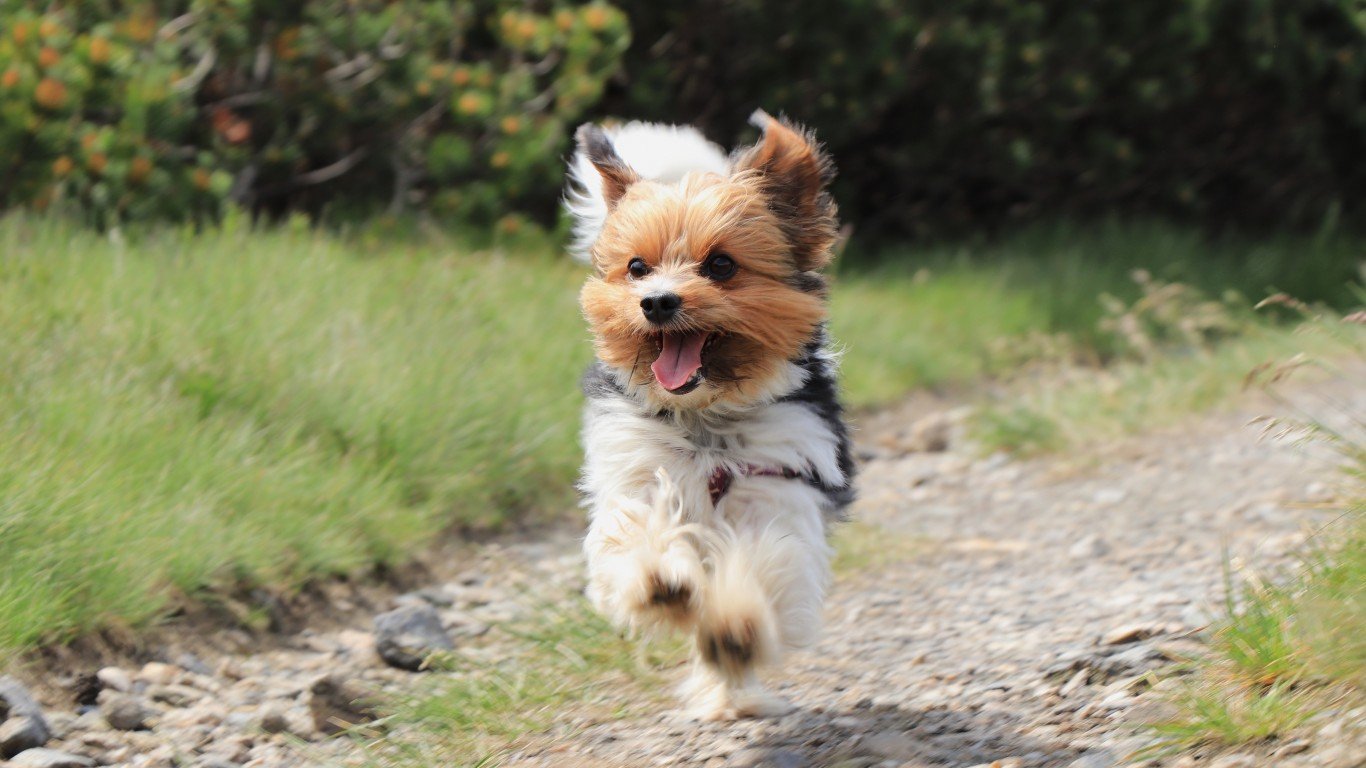
It’s important to remember that when you add a terrier to your family, you aren’t getting a lazy lap dog. These dogs have a knack for vermin hunting and have a vicious prey drive for small animals. Their natural drive to chase and kill small animals can make them quite dangerous to people who own free-range rabbits or rats.
The breed standard of the Biewer Terrier indicates that the dog’s coat color should be chocolate, tan, and white, black, tan, and white, or blue, tan, and white. Other color colors will be disqualified if you try to compete in an AKC competition. These little guys only weigh between 4 and 8 pounds in adulthood and can live up to 16 years with proper care. The AKC recommends getting your Biewer Terrier the following tests to ensure their health: Primary Lens Luxation, Progressive Retinal Atrophy and a general eye exam.
Belgian Laekenois (2020)
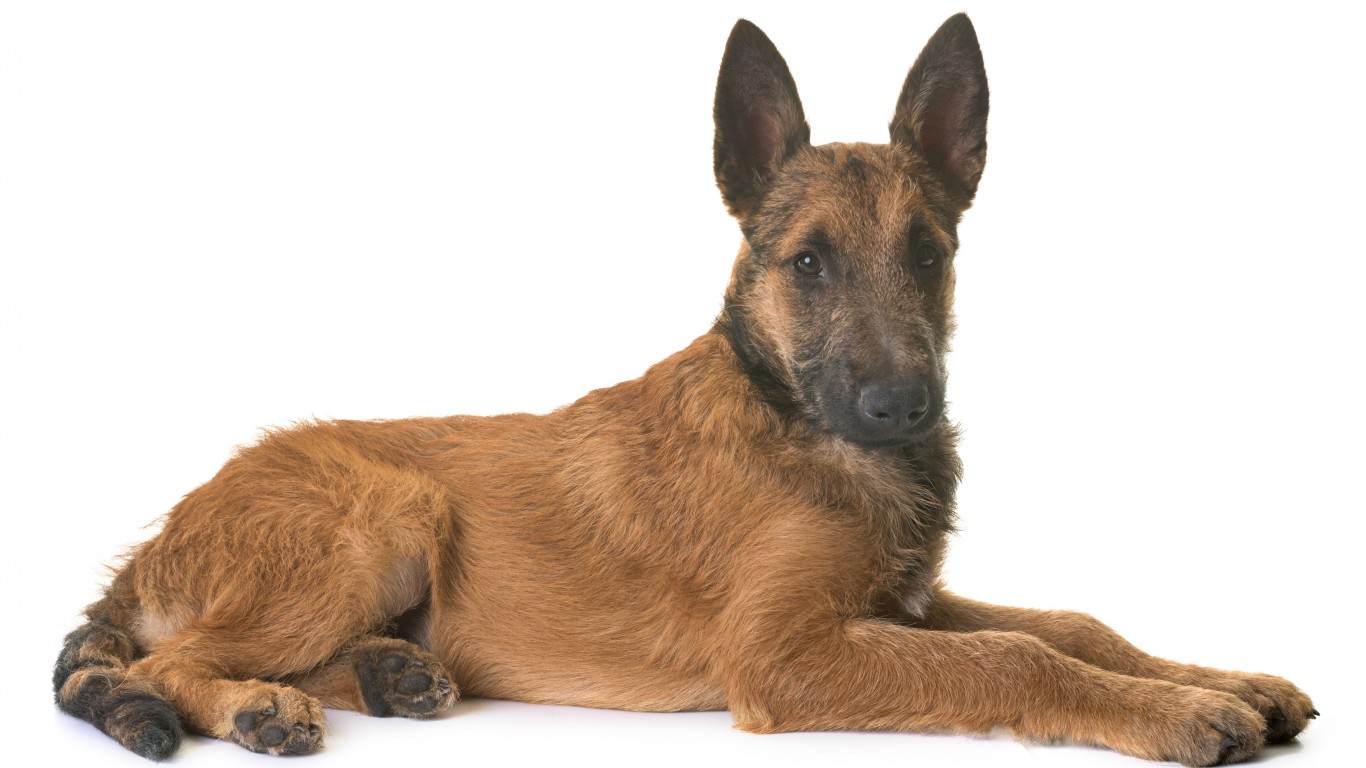
The Belgian Laekenois is one of four related Belgian dog breeds: the Belgian Laekenois, Belgian Malinois, Belgian Sheepdog and Teruven. Of these four, the Laekenois is the rarest Belgian breed worldwide.
While the Laekenois might look similar to the other four—they are genetically related, after all—it has a different coat color, texture and length than the Malinois, Sheepdog and Teruven. However, it does have a similar body structure and temperament to the Malinois. So, if you were considering adding a Malinois to your family, a Laekenois is another excellent option that you can fall in love with.
Much like the Malinois, the Laekenois is an excellent dog for a family that wants a dog that will protect them but can relax and be playful when there are no threats. It’s a dog that is very playful and affectionate with family and people it knows well, but with strangers, the best-case scenario is that your Laekenois will approach with reservation.
Belgian Laekenois (2020)
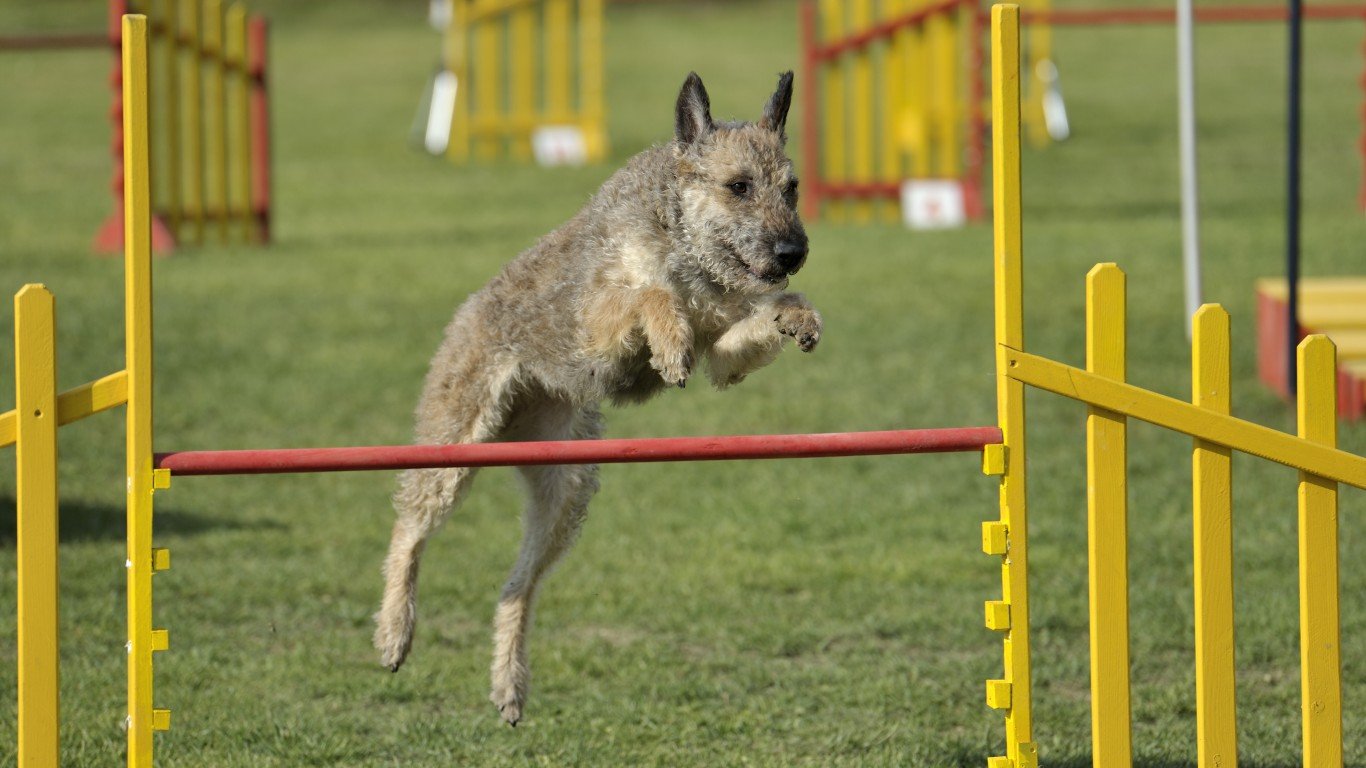
The breed standard for the Belgian Laekenois states that the dog’s coat color should be black and tan, fawn, mahogany, red sable, cream sable, fawn sable, red, or cream. Any other coat colors will result in a formal disqualification from AKC competitions. It’s a medium-large dog that weighs in between 55 and 65 pounds in adulthood and lives around 10 to 12 years — about average for large dogs.
The AKC recommends the following tests for Belgian Laekenois: hip evaluation, elbow evaluation, eye exam, thyroid evaluation, dentition exam and cardiac exam. These exams will allow your vet to catch and manage any common hereditary illnesses present in the Belgian Laekenois bloodline.
Dogo Argentino (2020)

The Dogo Argentino is a huge dog that you can take hunting for big game like wild boars and pumas. These dogs are pack hunters hailing from Argentina where they assist humans in hunting large game that can feed a family easily. As such, they’re strong, intelligent and extremely athletic. They can keep up with you all day while you track and take down your game.
Like a lot of other hunting dogs, they have a smooth coat that won’t get caught in underbrush. They have an excellent sense of smell that makes them good for tracking gaming and amazing lung capacity that gives them the ability to chase game as far as they can run. They’re extremely agile but muscular enough to tango with big game that might injure a smaller hunting dog if it fights back.
Dogo Argentino (2020)
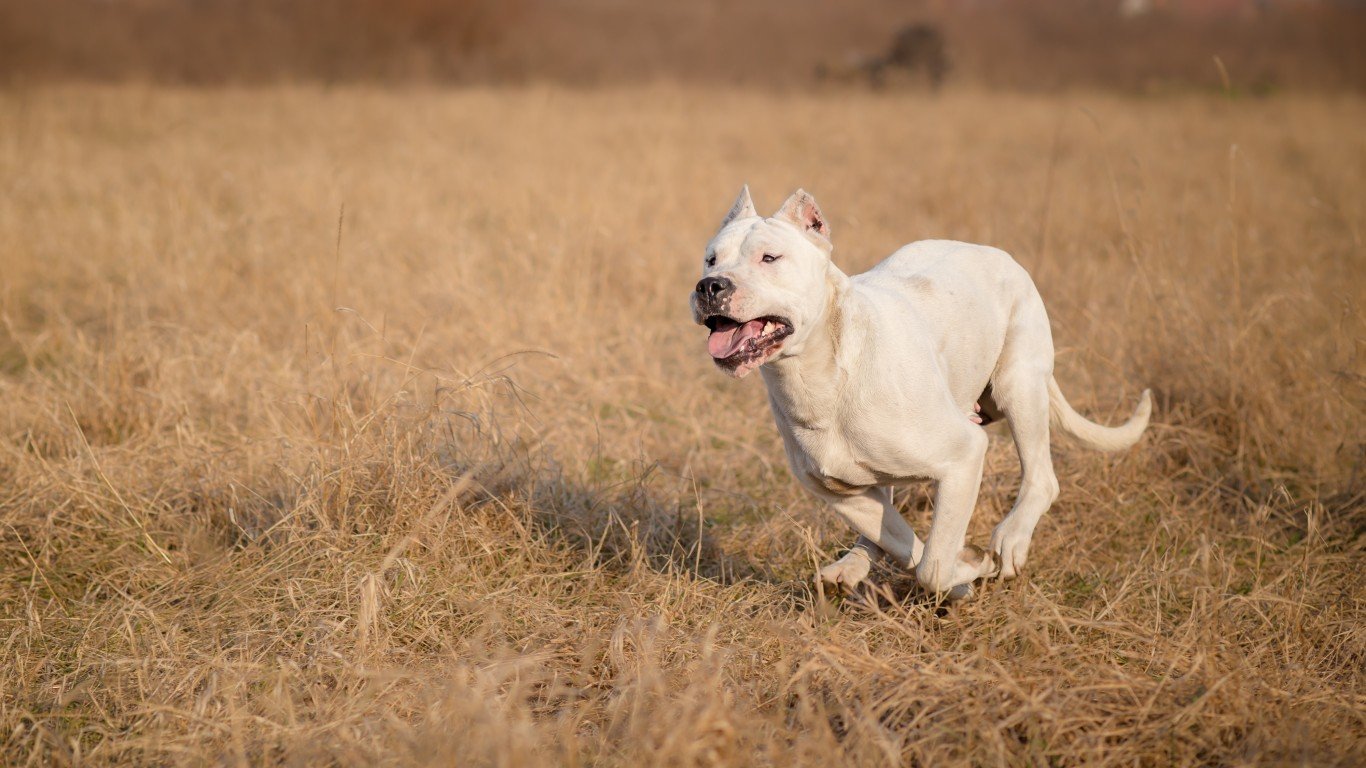
The breed standard for the Dogo Argentino states that the dog should have a white coat only. However, the AKC permits dogs to have a dark patch near the eye so long as it doesn’t cover more than 10% of the dog’s head. These giants will weigh between 80 and 100 pounds when they reach adulthood and will live 9–15 years with proper care and attention.
The AKC recommends that you get these dogs a hip evaluation, BAER testing and a cardiac exam to ensure that they have not picked up any breed-specific hereditary disorders. Regular veterinary exams, especially of the hips and heart, can help manage the dog’s natural aging and prevent hip dysplasia as the dog gets older.
Barbet (2020)
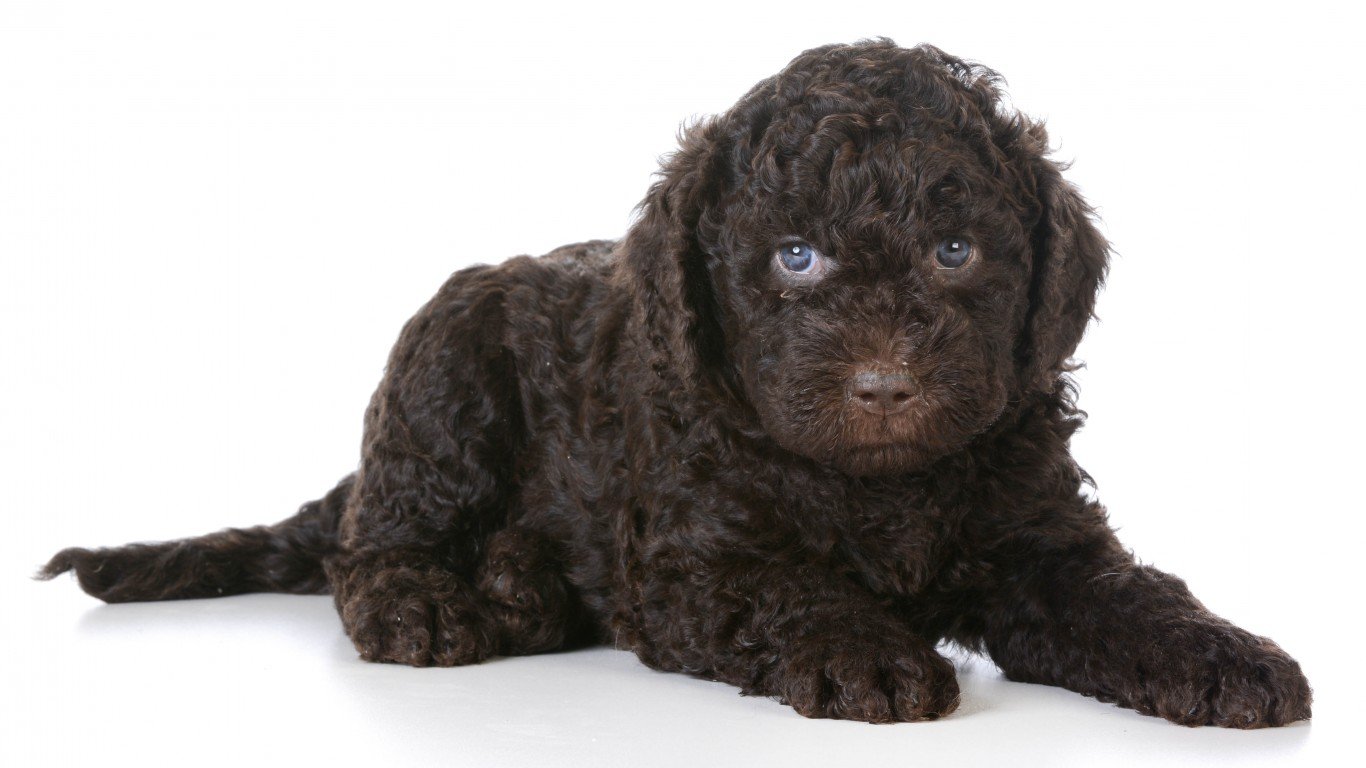
Another dog breed the AKC officially granted recognition to was the Barbet (pronounced “bar-bay”), a French waterdog with a long history in France. It’s unclear the exact date that this breed first appeared in France, but we can see Barbets in French paintings dating back to at least the 16th century.
Like other waterdogs, its primary job is to locate, flush and retrieve game birds for hunters. This job requires the Barbet to have an excellent sense of smell to help it locate game birds for its handler. Barbets also make excellent watchdogs, even if they aren’t as suited for guarding as Belgian Laekenois or Malinois.
Barbet (2020)
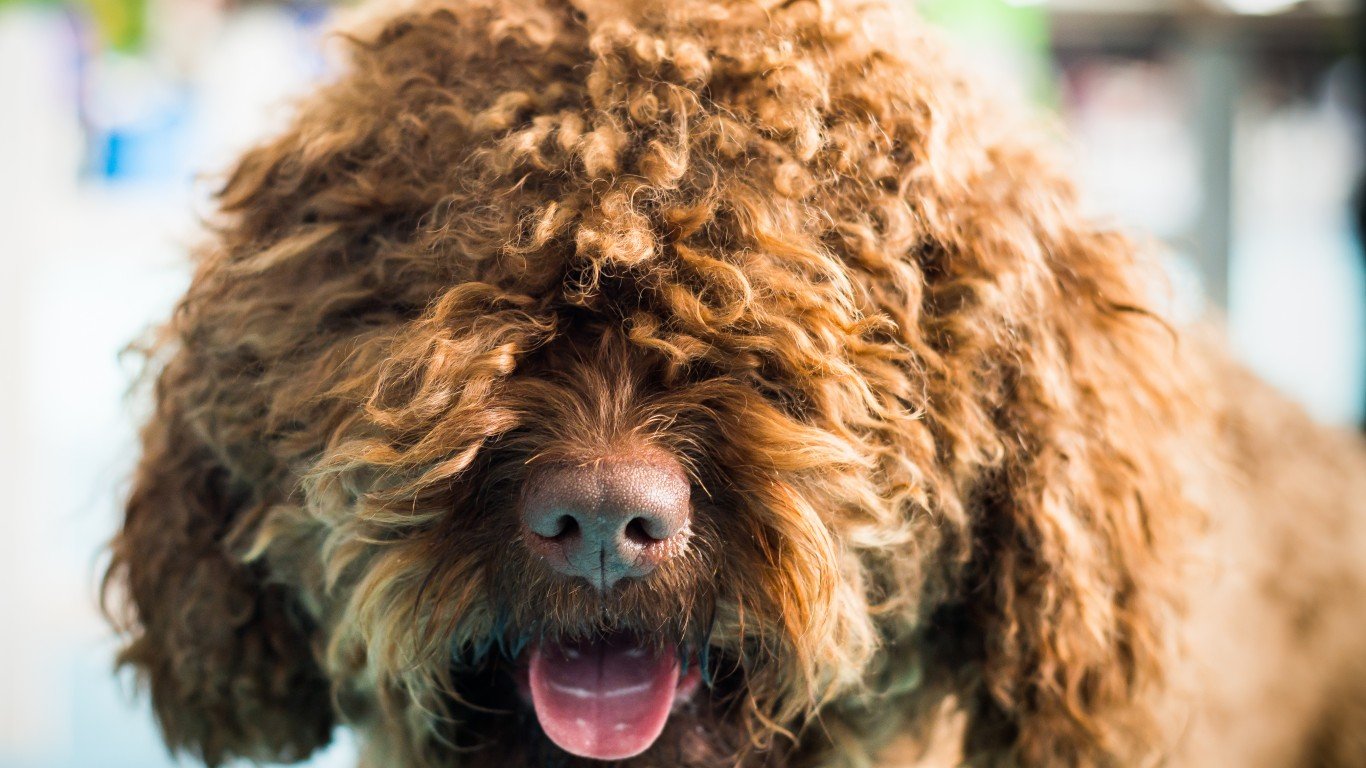
Barbets have a rectangular side profile that gives them a distinctive appearance. They’re social and loyal dogs that will play nicely with people and other dogs. However, it’s important to supervise small children with your Barbet as they won’t tolerate disrespect. As hunting dogs, they need ample exercise and mental stimulation to thrive and be happy. They won’t be happy living the lazy life. You’ll need to play with them and keep them busy or they could get destructive out of boredom.
The breed standard for the Barbet states that the dog’s coat must be black, brown, fawn, gray or white. Other coat colors will result in a disqualification from competition. It should weigh between 35 and 65 pounds, the perfect size for bird hunting. Barbets will live between 12 and 14 years with proper care and veterinary attention. The AKC recommends the following tests for Barbets: hip evaluation, elbow evaluation and a general eye exam.
Azawakh (2019)
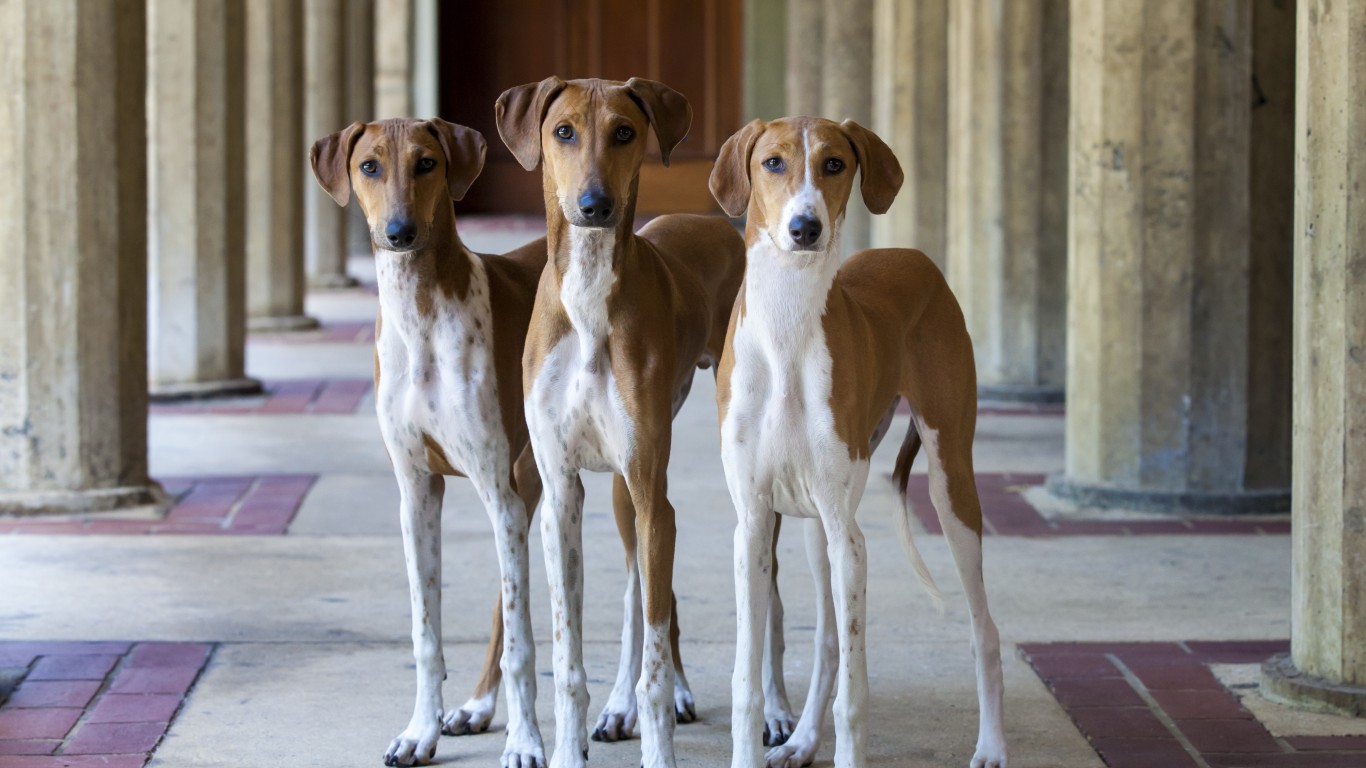
The Azawakh is a West African sighthound with genetic roots in Burkina Faso, Mali and Niger. It received full AKC recognition in 2019. Like most hounds and other hunting dogs (except waterdogs) the Azawakh has a short, fine coat. In the relative comfort of the U.S., the Azawakh enjoys a decorated career as an excellent guard dog and lure courser.
Due to the Azawakh’s lean build and short coat, you can easily see the dog’s impressive musculature with the naked eye. The short coat also helps emphasize the dog’s smooth, s-shaped contours, deep chest and aerodynamic head which all help it chase game efficiently.
Azawakh (2019)
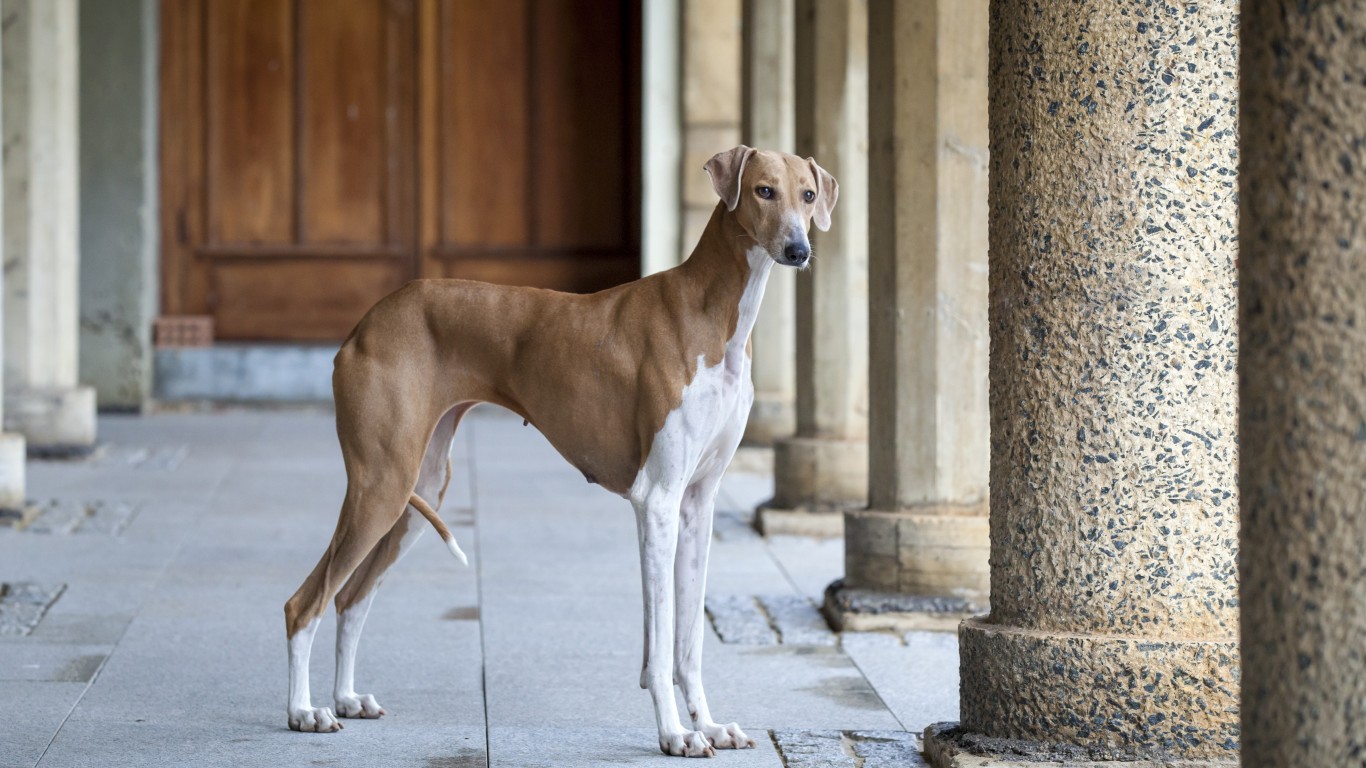
The breed standard for the Azawakh doesn’t disqualify any coat colors or markings. Azawakhs can compete in AKC dog shows and other competitions regardless of what coat color or markings are present. Males are significantly bigger than females with a male Azawakh coming in at 44–55 pounds while a female averages 33–44 pounds. Most Azawakhs live between 12 and 15 years with proper care, and they are an extremely healthy breed that doesn’t require any significant testing for the presence of hereditary diseases.
Nederlandse Kooikerhondje (2018)
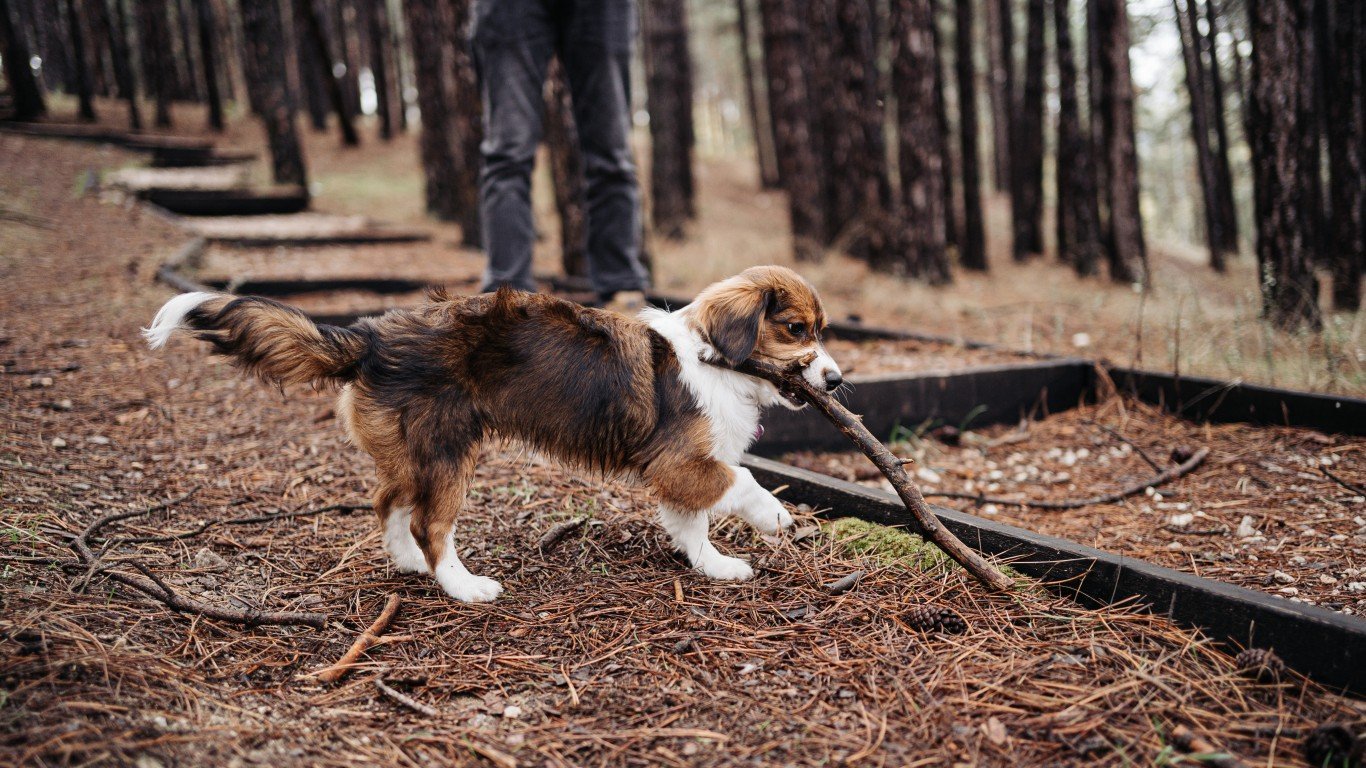
The Nederlandse Kooikerhondje is a Danish sporting dog. It entered the AKC’s sporting group in 2018. Like other sporting dogs, the Kooikerhondje is lively, quick, athletic, confident, good-natured and alert. Its feathered ears and tail give it a distinct and elegant appearance that you don’t see on many other sporting group dogs.
This dog breed loves the outdoors and has a visible hunting bone structure. If you want a hiking buddy or have a large property for your dog to explore, the Kooikerhondje won’t miss a beat and will have a ball experiencing everything the world has to offer. Since the dog excels at dog sports, it can work as long as the individual dog has the right drive and proper training. However, it’s not as suited for dangerous work like guard work as dogs with more protective drive, like the Belgian Laekenois.
Nederlandse Kooikerhondje (2018)
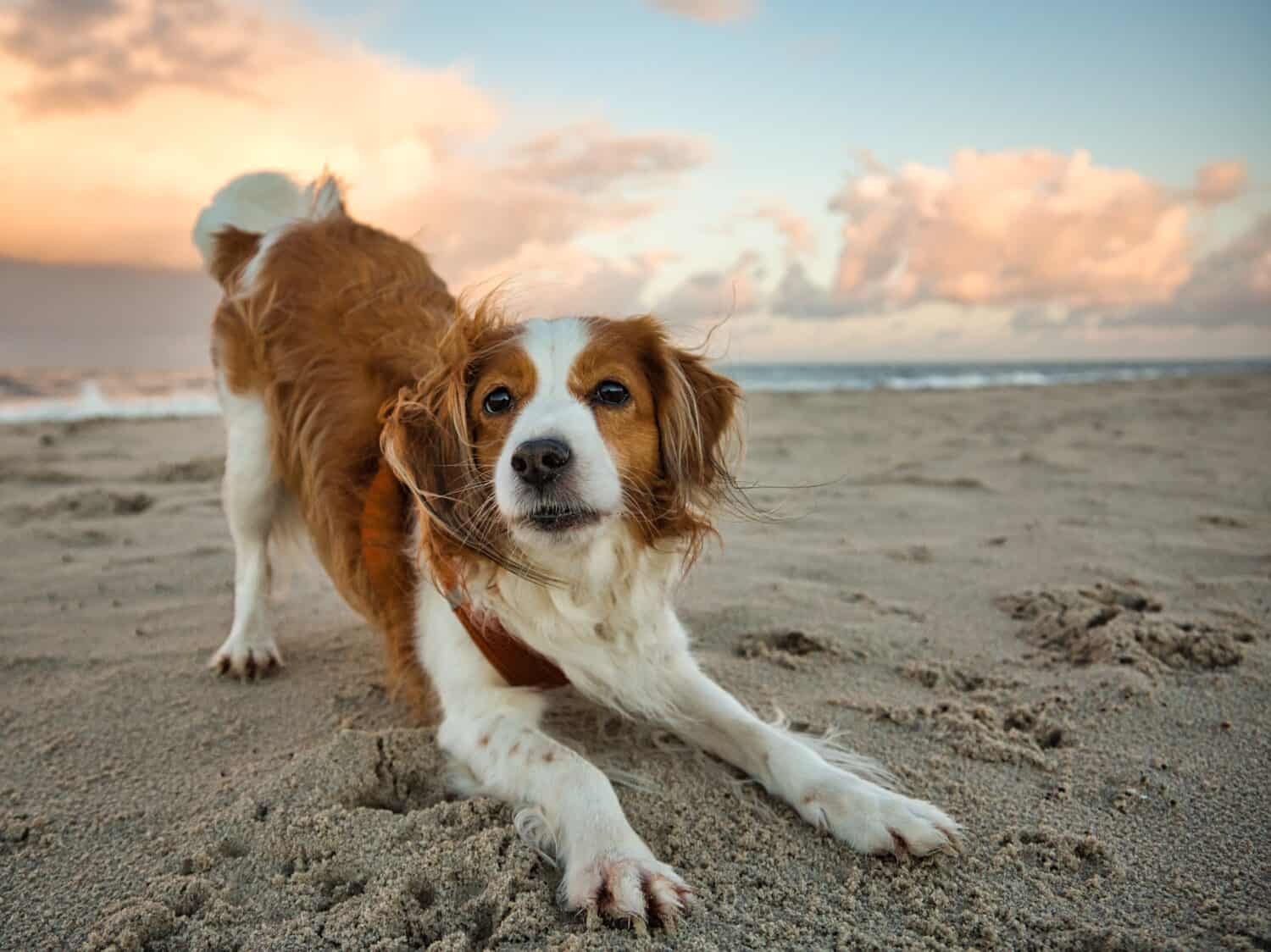
The breed standard for the Nederlandse Kooikerhondje says that the dog should have a red and white coat. The AKC doesn’t allow for other coat colors for the Nederlandse Kooikerhondje in competition. The dog is of medium size, weighing between 20 and 30 pounds in adulthood. With proper care, your dog should live between 12 and 15 years.
The AKC recommends the following evaluations for the Nederlandse Kooikerhondje to check for symptoms of hereditary malformations: patella evaluation, hip evaluation, Von Willebrand Disease III evaluation, hereditary necrotizing myelopathy evaluation and a general eye exam. (Interested in learning about bigger pups? Check out the largest dog breeds in the world.)
